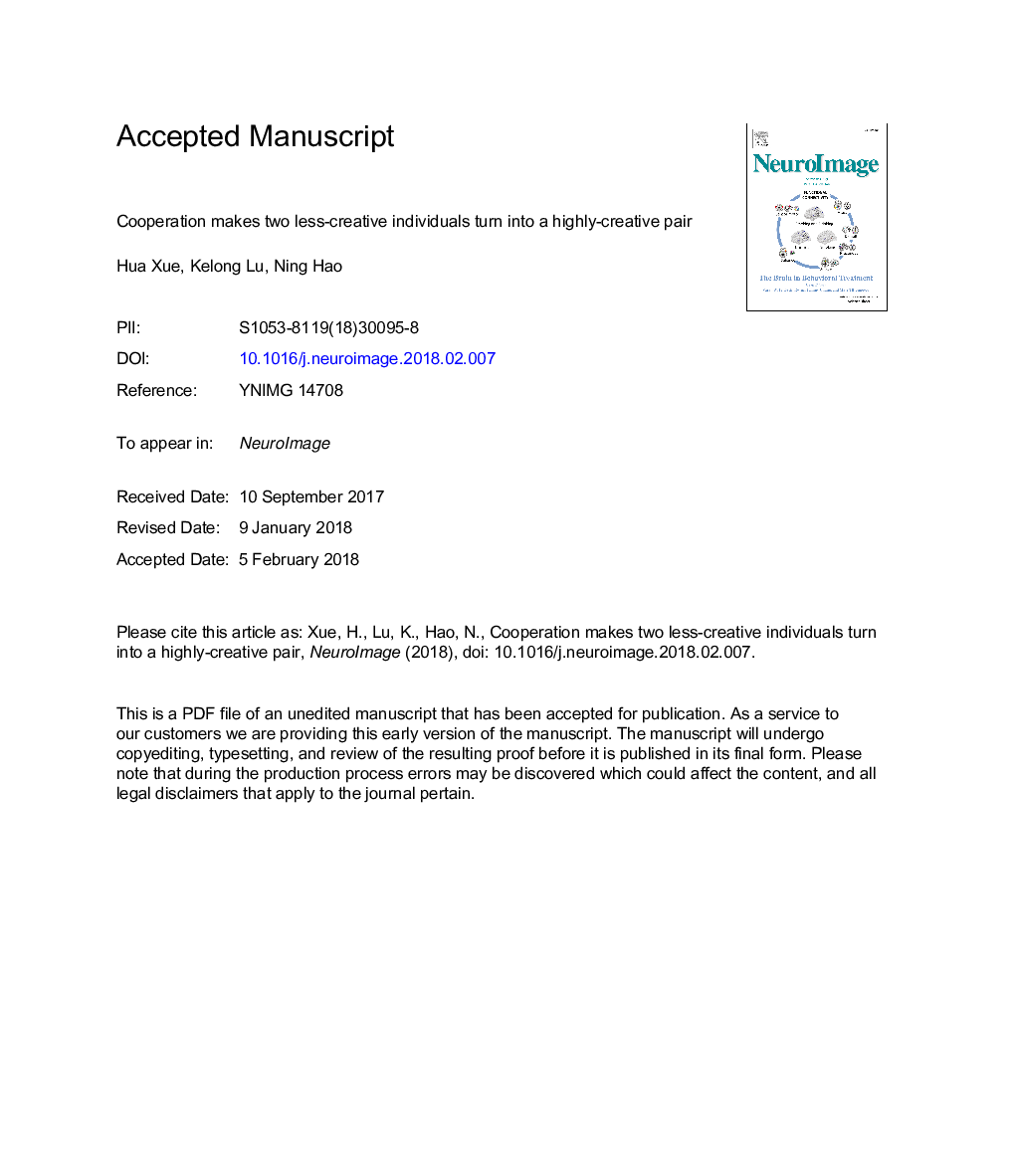| کد مقاله | کد نشریه | سال انتشار | مقاله انگلیسی | نسخه تمام متن |
|---|---|---|---|---|
| 8687044 | 1580838 | 2018 | 50 صفحه PDF | دانلود رایگان |
عنوان انگلیسی مقاله ISI
Cooperation makes two less-creative individuals turn into a highly-creative pair
ترجمه فارسی عنوان
همکاری باعث می شود دو فرد کمتر خلاق به یک جفت بسیار خلاق تبدیل شوند
دانلود مقاله + سفارش ترجمه
دانلود مقاله ISI انگلیسی
رایگان برای ایرانیان
موضوعات مرتبط
علوم زیستی و بیوفناوری
علم عصب شناسی
علوم اعصاب شناختی
چکیده انگلیسی
This study aimed to investigate which type of group (e.g., consisting of less-creative or highly-creative individuals) would perform better in solving creativity problems, and explore the underlying inter-brain neural correlates between team members. A preliminary test (an alternative-uses task) was performed to rank individuals' level of creativity, and divide participants into three types of dyads: high-high (two highly-creative individuals), low-low (two less-creative individuals), and high-low (one highly-creative and one less-creative individual). Dyads were then asked to solve a realistic presented problem (RPP; a typical creativity problem) during which a functional near-infrared spectroscopy (fNIRS)-based hyperscanning device was used to record the variation of interpersonal brain synchronization (IBS). Results revealed that less-creative individuals, while working together, would perform as well as highly-creative individuals. The low-low dyads showed higher levels of cooperation behaviour than the other two types of dyads. The fNIRS results revealed increased IBS only for low-low dyads at PFC (prefrontal cortex) and rTPJ (right temporal-parietal junction) brain regions during RPP task performance. In the rDLPFC (right dorsolateral prefrontal cortex), the IBS in the low-low dyads was stronger than that of high-high and high-low dyads. In the rTPJ, the IBS in the low-low dyads was only stronger than that of the high-low dyads. Besides, the IBS at rDLPFC and rTPJ regions in the low-low dyads was positively correlated with their cooperation behaviour and group creative performance. These findings indicated when two less-creative individuals worked on a creativity problem together, they tended to cooperate with each other (indicated by both behaviour index and increased IBS at rDLPFC and rTPJ), which benefited their creative performance.
ناشر
Database: Elsevier - ScienceDirect (ساینس دایرکت)
Journal: NeuroImage - Volume 172, 15 May 2018, Pages 527-537
Journal: NeuroImage - Volume 172, 15 May 2018, Pages 527-537
نویسندگان
Hua Xue, Kelong Lu, Ning Hao,
